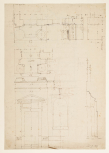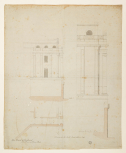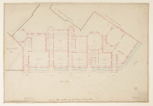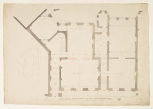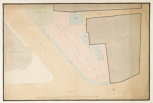Drawing
London: New Bank Buildings, Princes Street, City of London, 1807-10 (115)
Preliminary designs for five new houses in Princes Street, August 1807 (4)
(2, 5) Augt 13th 1807 (3) John Soane Archt / Lin Inn Fields / Augst 13 1807 (4) Augst 13th 1807
(2, 5) George Bailey (1792-1860, pupil then assistant 1806-37, curator 1837-60) (3) Charles Malton (1788-?, pupil 1802-09), with additional inscriptions by George Bailey (1792-1860, pupil then assistant 1806-37, curator 1837-60) and Soane (4) Francis Edwards (1784-1857, improver July 1806-October 1810), with additional inscriptions by George Bailey (1792-1860, pupil then assistant 1806-37, curator 1837-60) and Soane
SM (2) volume 60/170 (3) 11/2/17 recto (4) 11/2/16 (5) volume 60/171





